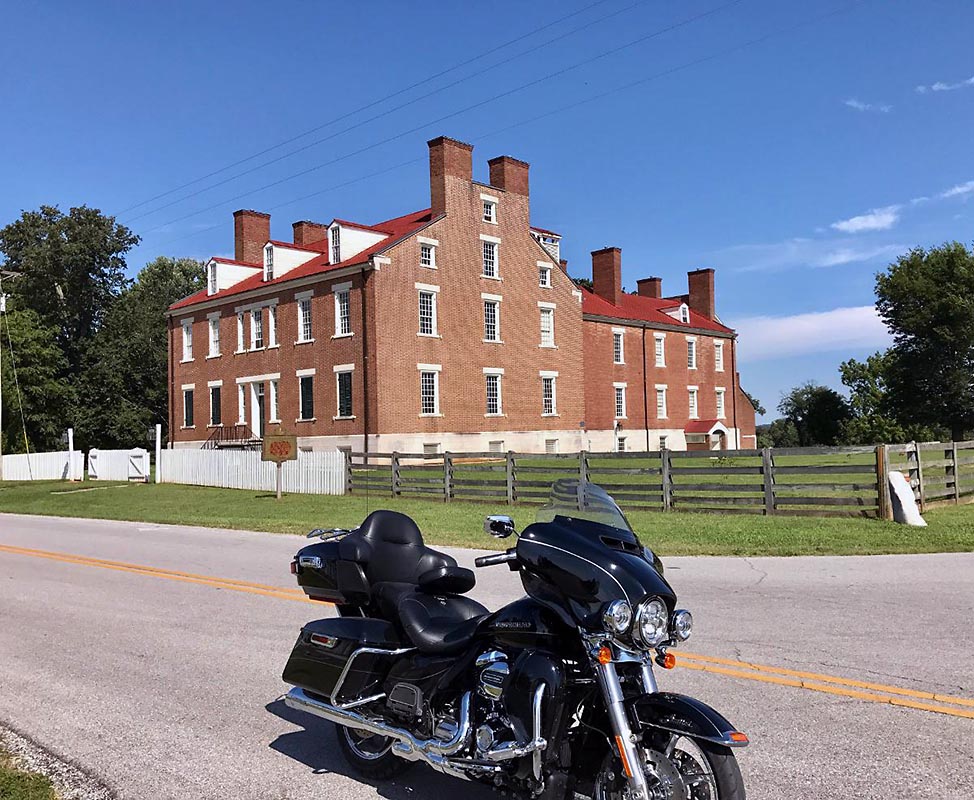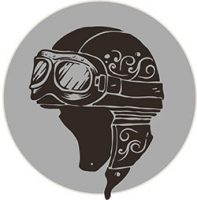 Auburn, KY – On a beautiful Saturday morning, I did what I so often LOVE to do. Go get a fresh hot cup of coffee, then take an early morning ride somewhere. The mornings are so peaceful and cool, with very little traffic. It’s perfect!
Auburn, KY – On a beautiful Saturday morning, I did what I so often LOVE to do. Go get a fresh hot cup of coffee, then take an early morning ride somewhere. The mornings are so peaceful and cool, with very little traffic. It’s perfect!
As I was watching the sun coming up, I was wondered which direction I would ride. Then it hit me, that on my way back from Arkansas last week, I came through Kentucky, down highway 68/80. I passed a familiar road sign to the “Shaker Museum.” From Clarksville, it’s a beautiful ride, and as so many bikers have, I’ve passed it many times.
I thought today would be the day I would visit to learn more.
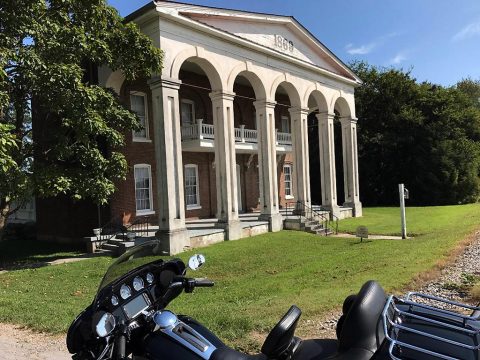
Located in Auburn, KY, about 14 miles from Russellville. The South Union Shaker Village is one of nineteen communal villages the group established in America in 1807. At one time, the farm was over 6,000 acres and the property featured over 225 buildings and produced an economy that brought great financial success.
Strict religious principles dictating excellence, simplicity and order in all things helped create a material culture that was unequaled throughout the 19th century. The village flourished during the early part of the century but suffered financial setbacks during the Civil War and a declining membership afterward.
The United Society of Believers in Christ’s Second Appearing, more commonly known as the Shakers, is a millenarian restorationist Christian sect founded in the 18th century in England.
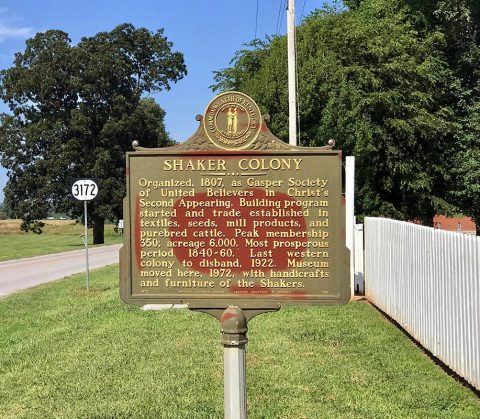
They were initially known as “Shaking Quakers” because of their ecstatic behavior during worship services.
As early as 1747, women assumed leadership roles within the sect, notably Jane Wardley, Mother Ann Lee, and Mother Lucy Wright. Shakers settled in colonial America, with initial settlements in New Lebanon, New York (called Mount Lebanon after 1861).
They practiced a celibate and communal lifestyle, pacifism, and their model of equality of the sexes, which they institutionalized in their society in the 1780’s. They are also known for their simple living, architecture, and furniture.
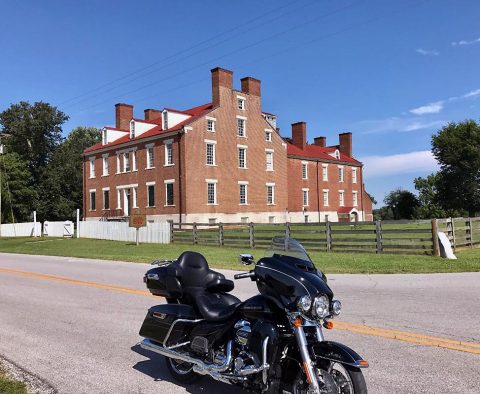
What remains of the property are nine buildings. A self guided walking tour is provided.
The 1875 Grain Barn: Used for threshing and grain storage, the Grain Barn was one of a dozen or more barns built at South Union.
1926 Maintenance Building: Constructed four years after the closing of South Union, this structure was built using materials from Shaker buildings that were being destroyed by the property’s new owner in the 1920’s.
1846 Ministry Shop: Each Shaker village was governed by an Elder and an Eldress, known as the Ministry. The Ministry Shop is where they lived and worked. The women used the front door and occupied the second floor and the men lived and worked downstairs, passing through the south entrance.
1824 Centre House: This dwelling house or dormitory was one of four in the village and was once home to 100 Shakers.
1823 Well Shed: This hand-dug limestone well’s location was chosen so it could provide water for the inhabitants of the Centre House, but its proximity to the main road made it a popular stopping place for travelers for 100 years.
1835 Smoke House and Milk House: Subsidiary to the Centre House kitchen, the Smoke House and Milk House were where butter and cheese were made and where meat was preserved and stored.
1854 Wash House: Probably the largest workshop building ever constructed in the Shaker west, the Wash House provided laundry care for those who lived in the Centre House. Sleeping space was provided for the sisters who worked in the laundry.
1847 Steam House: The Steam House was built at a time when current agricultural practices encouraged cooking feed for livestock during the winter months.
The walking tour includes viewing all of the structures both inside and out, and a gift shop.
As so many places we pass on our road trips, the South Union Shaker Village is a piece of history that sits in our own back yard and is worth the stop, to “step back in time” and remember a simple lifestyle that provided so much for so many.
Visit their website here.
Visit the Wikipedia page here.

